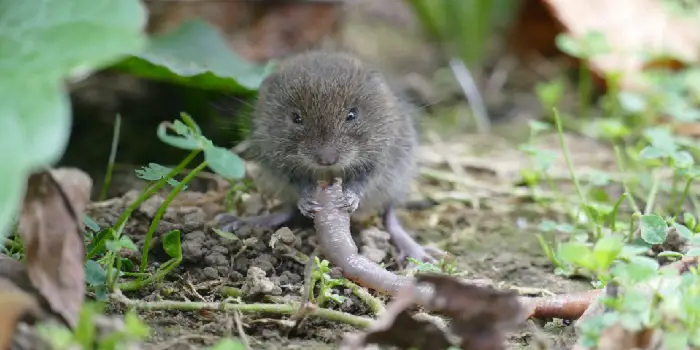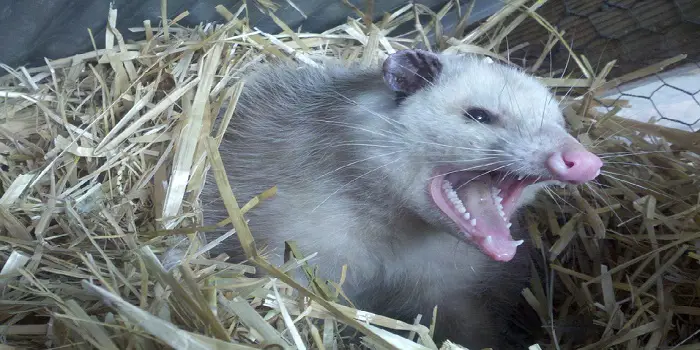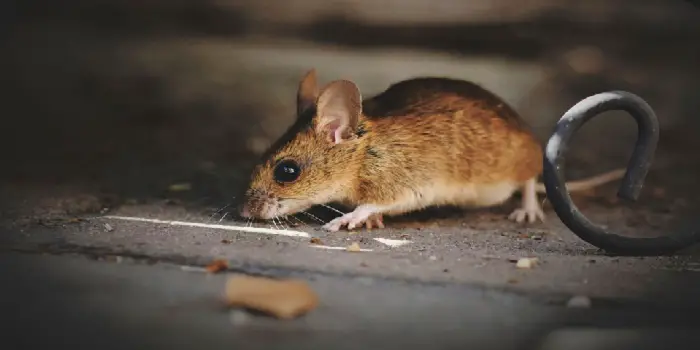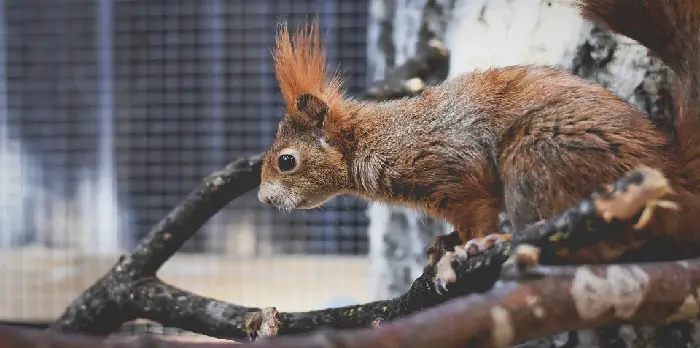
Squirrels may seem like cute and cuddly outdoor critters, but these fuzzy little guys can pose serious hazards to homes and buildings.
If you hear scratching or scurrying across your attic, soffits, roof, or ceilings, it could be a sign that some squirrels have decided to make a home in your home.
Should you worry about them? Are they harmful to you, your kids, or your pets?
If yes, what should be done if you see them nesting in your attic?
I will try to cover all these details in this article. So, let’s jump in…
Why are Squirrels in Your Attic?
This is the first question people often ask when they see a squirrel in their attic and soffits.
Well, your attic in your home is a great place for squirrels to find shelter and reproduce safely.
And this is the major reason they are breaking in and using your attic for.
Squirrels tend to be very shy little creatures and they need a nice comfortable place to nest, that is free from all the crowd.
How do they get in?
They can enter your attic through vents, chimneys, gutters, roof edges, gaps or cracks, and even by chewing the weaker areas.
Remember, the more squirrels you find in your yard, the higher the chances of entering them into your home.
So, if you find the squirrels in your garden in large numbers, do not ignore them and take action immediately to remove them away before they enter your home.
Steps to Keeping Squirrels Out of Attic?
Many house owners suffer from the overpopulation of squirrels and thus have to take rigorous steps to eradicate them out of their homes.
Some of them include:
1- Identify and locate the nest
An outdoor squirrel nest (called dreys) will most likely look like a small, round bulb of leaves bunched together.
It’s usually made on trees from materials like leaves, twigs, bark, moss, and other compressed materials.
In the attic or your roof, the squirrels make their nests from materials like cardboard, leaves, and other insulating materials.
Once you are sure it’s a nest of squirrels in the attic, you can try removing them.
Just make sure that there are no baby squirrels present inside. If there are, wait for a few weeks until they grow and leave.
2- Seal the openings in your attic
Once you have removed the squirrel’s nest, make sure you seal all the gaps in your attic around the roof area so that squirrels find no entrance.
Look out for pipes for additional holes and get them sealed as well. Plus, you should cover any vents with mesh to make sure it’s not enterable.
3- Eliminate their food supply
Food and water are the biggest attraction for squirrels.
They generally feed on fruits, veggies, nuts, and other food items in your yard.
If you find them eating fruits and nuts from your tree, cover it with a net.
This will make it harder for them to reach the trees that can become a place for them to get inside your house and settle in areas like the roof, attic, and walls.
4- Get a pet dog or a cat to deter them
Cats and dogs scare squirrels away.
These pets at your home patrol your property which scares the squirrel, and they don’t enter your home.
5- Coyote urine keeps squirrels away
Coyote urine prevents squirrels from entering your area, but they don’t get scared of it.
If squirrels have populated your home, then coyote urine will help you in deterring them away.
The method only works if you don’t have anything to lure squirrels to your home. It is an effective deterrent but doesn’t scare them.
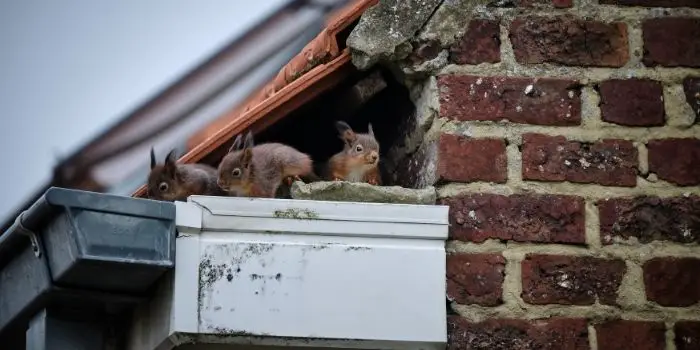
What Damage Can Squirrels Do in The Attic?
Most of the time, squirrels in your attic are not a threat.
In fact, squirrels are among the pests many of us love and encourage to be around.
You may have seen your kids stopping and watching them jumping along a porch or a deck railing through the window.
As cute as squirrels may sound, they pose some serious dangers to you and your attic, ones you’ve likely never even considered.
Keep reading for the five major dangers squirrels cause to homes and how to avoid them.
a- Electricity Issues
Squirrels are born gnawers, and unfortunately for you, nuts and wires don’t feel all that different to them.
Squirrels who enter your home often look for safe, tight spaces to build nests, and they’ll chew through anything to get there.
Chewed electric wires can cause power outages and create major fire hazards, especially in dry or dusty attics.
b- Plumbing Issues
Just like electric wires, pipes are attractive chew toys for squirrels.
The harder pipes let squirrels grind their front teeth down, similar to how humans file their nails.
The usefulness of pipes as files means that squirrels are likely to spend a long time chewing on pipes and causing major damage and breakage.
A broken water pipe can cause short-term water damage and long-term structural issues to your home.
c- Structural Damage
Squirrels tend to leave a trail of destruction behind them whenever they move into homes.
Squirrels likely cause damage when they’re creating a point of entry, whether it’s because they chewed through house siding or slipped in through a weak part of your attic.
Not only do they create exterior damage, but the nests they build on the interior of your house cause just as many problems.
Squirrels chew through anything, including drywall, insulation, and even wood siding.
Female nursing squirrels are especially destructive because their maternal instincts drive them to build a full nest to raise their young.
So, they steal everything from insulation to newspaper to pad their home, which leaves a pile of garbage and potentially fire-hazardous material in your wall or ceiling.
d- Odors
Smells are an underrated annoyance that comes with having a squirrel infestation.
Fecal matter, urine, and rotted food build up quickly and can leave a stench that persists even after the nest is cleaned out.
Another unfortunate consequence of having squirrels in your home is that sometimes they get stranded in parts of your home.
If squirrels fall down wall cavities or are trapped in certain places in your attic, they can die and leave even worse smells as they begin to decompose.
e- Health Concerns
As pointed out before, having squirrels in your attic can be a major health concern for your family members.
Squirrel poop, for example, can carry all kinds of diseases, from salmonella to rabies.
They also bring fleas, ticks, mites, and other parasites into your home, which are especially difficult to get rid of for humans.
When it comes to squirrels, the safest bet is to have them removed along with their droppings immediately before they cause any long-term problems or damage.
Reach out to a qualified pest control specialist to handle any and all pest problems today!
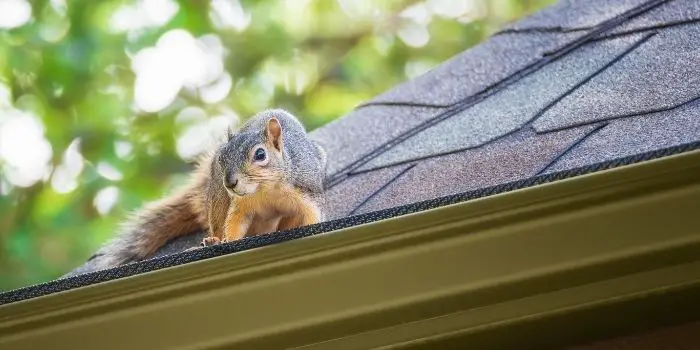
How to Tell if You Have a Squirrel Inside the Walls & Attic?
Many times, people confuse squirrels with rats and cannot tell them apart from the signs they have in their attic.
Rats typically are rodents that do not leave footprints – because they have long claws.
Also, if there are mice, they will always leave smaller footmarks (because of the small feet they have) when they are active at night.
So, if you detect some medium-sized footprints or footsteps of a rodent in your attic (or near the windows) – it can be a sign of a squirrel.
Since squirrels are active during the daytime, you will often find these signs in the evening.
Droppings
Squirrel droppings on the floor with an unpleasant smell can be a great way to detect these critters.
If you find these animals’ excrement in your home, you will need to take some quick steps for their removal – as you never know if they are carrying various diseases.
Loud Noises
Another way to detect squirrels in your attic or in the roof is by hearing the loud sound they will make when they try to enter your premises by climbing trees.
You will generally hear lots of scurrying on the roof in the daytime – when they try to make their nest at your place.
Hearing and following these noises can be hard if you have pets and children. So, you should either listen to these sounds.
- When they are sleeping or not at home
- Or decrease the activities in your home to hear these noises
Remember, you may not always find the footsteps of a squirrel but can hear loud noises they make.
To confirm it’s a squirrel, you can put some flour on your attic where it’s possible that a squirrel will leave its foot mark.
Can You Trap or Poison the Squirrels in the Soffits and Attic?
Squirrels are extremely persistent beings and get adaptable to humans easily.
Hence, a lot of methods that may have worked in the past may not work in the present scenario.
For many people killing a problematic squirrel is, therefore, one of the best methods for these rodents.
IMO, killing should be a last resort – especially when you cannot control the severe squirrel infestation in your house.
If you really want to go this route (for whatever reason), there can be more than one way to kill them…
1- Poison a squirrel
If everything else fails, poisoning is the option for you. However, it is important to check your laws and regulations.
Also, check if the squirrels you are killing aren’t the endangered ones.
When poisoning squirrels, ensure that you don’t hurt any other animal in this procedure.
Squirrels may get eaten by predators such as cats which can also get poisoned. To avoid this from happening, it is important to poison squirrels inside their burrows.
Remember, scattering a common rat poison on the ground will not lure them and may kill other animals.
So, make sure you only use the legal poison in your area meant for poisoning the squirrels.
Some of the best commercial options that are available on the market are:
- Bell Contrac Blox
- Farnam Just One Bite II
- Tomcat All-Weather Bait Chunx
- Neogen Rodenticide Ramik Nuggets
- JT Eaton 709-PN Bait Block Rodenticide
- Bell Final Blocks Rodenticide
- JT Eaton 750 Top Gun
Most of these squirrel poisons contain active anticoagulant ingredients such as warfarin, diphacinone, brodifacoum, and bromadiolone that hampers the body of the squirrel to recycle vitamin K.
A few basic things you need to look at while picking the right poison for squirrels are:
- Flavors
- Texture
- Size and Color
- Single Feed or Multi Feed Poisons
2- Set the squirrel traps
You have two kinds of traps to catch the squirrel. These are: kill traps and live traps.
Whichever you choose, make sure you use the right kind of bait to catch a squirrel in the attic.
While the best bait for squirrels is usually a combination of peanuts and peanut butter, you can use various other products to lure them into a trap.
Some of these are:
- popcorn
- cereal grains
- apple slices
- sunflower seeds
- anise oil on bread
- almond extract on bread
Some states have particular regulations to trap squirrels, while some states have completely prohibited squirrel killing without a license.
There are states which allow you to kill squirrels but don’t allow live trapping.
The simple reason behind it is that squirrels may be host to several diseases and pose a threat to humans.
It is prohibited to relocate a squirrel to another location in several places.
This is due to the reason that they can transmit the disease to other squirrels or some other animals and can pose a problem to micro-ecosystems.
So, before you try this method, check with your local guidelines to be safe.
3- Fumigants like Acrolein (Magnacide)
Fumigating is also an option to get rid of squirrels.
In some states, you have an agriculture office selling gas to fumigate their burrows.
However, in some states, you may need professional help to fumigate.
It varies from poison to poison as some poisons can only be used with a permit.
The Conclusion
Watching squirrels outside your home is no less than a fairy tale experience.
However, squirrels may be a high nuisance and could cause a lot of damage to your attic, eaves, soffits, barn, and roof.
If you are really concerned about the safety of your home and family members, it’s safe to keep away from them.
No matter what deterrent method you choose, you should try to stop them from coming in and around your property as soon as you see them.
Share the post "How to Get Rid of Squirrels in Attic, Soffits, and Walls?"

Welcome to ProShieldPest.com. I am Tina Jones. I have been working as a pest removal professional in Winslow, Arizona lately. At present, I love to spend my time with my family as a retiree.
Here I share all my knowledge and experiences to help people understand better how they can stop pests at their homes without actually killing them. Hopefully, the information you will find here will help in safeguarding your home! You can check more about me here.

